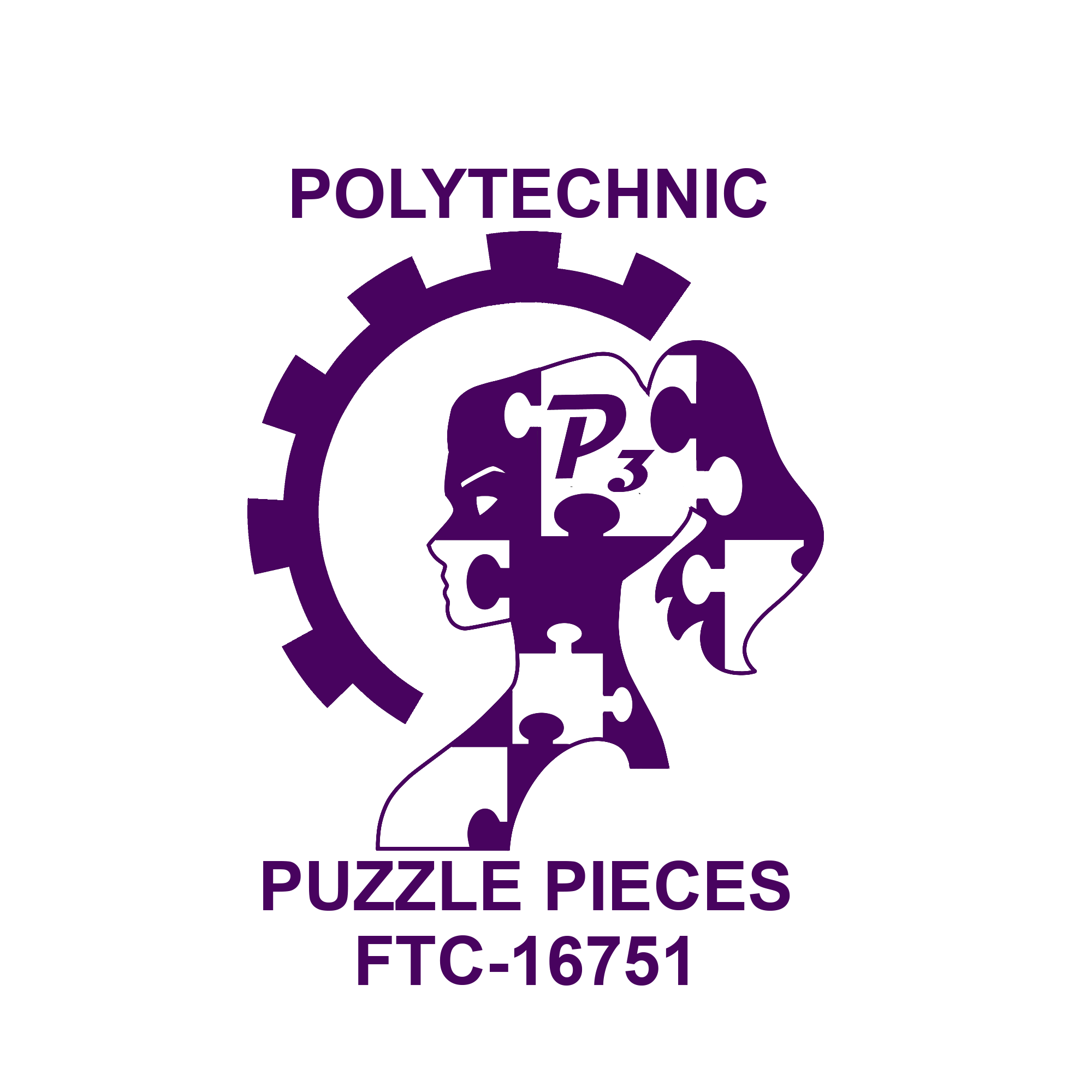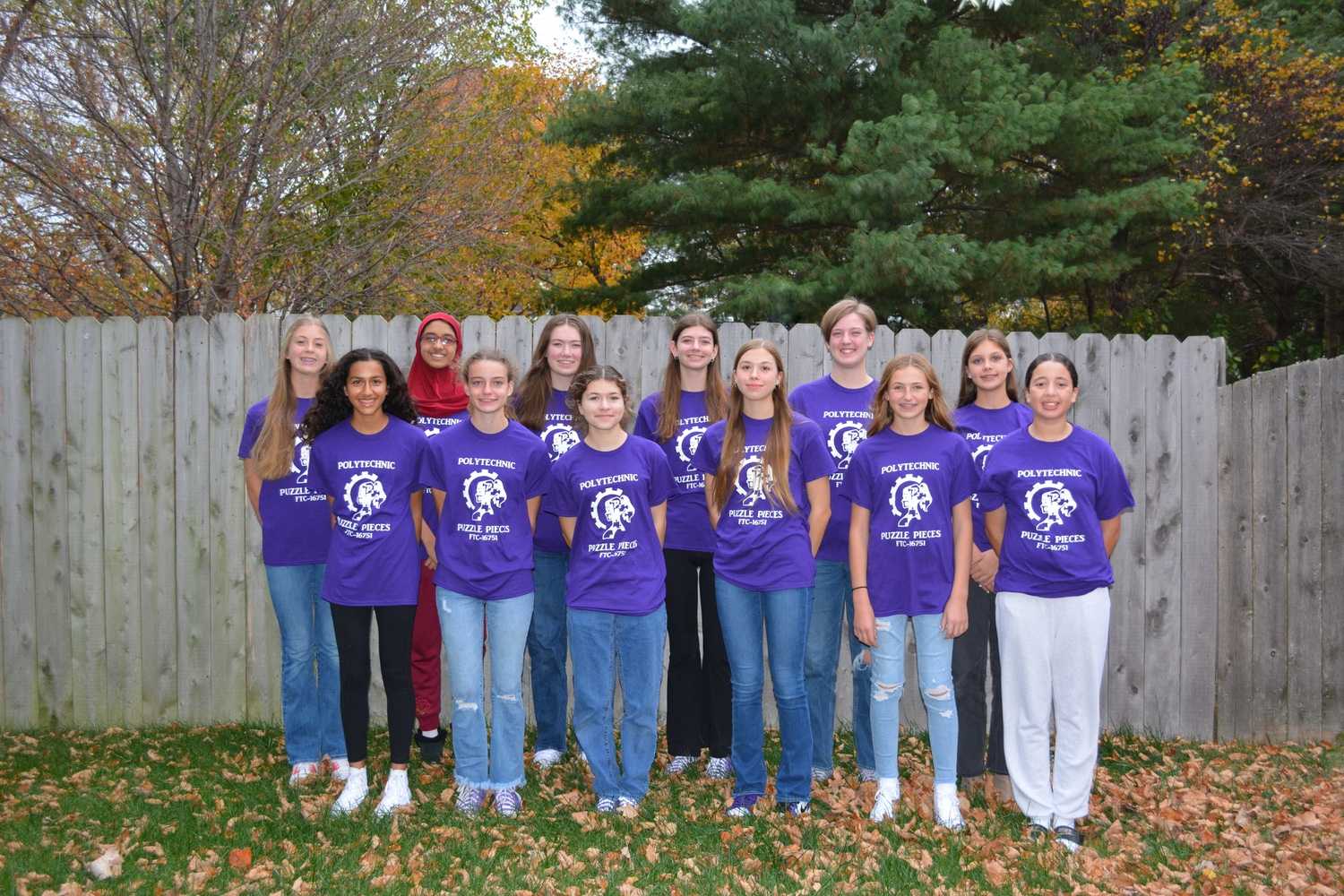
Polytechnic Puzzle Pieces
FTC #16751
We are an all-girls robotics team based in O’Fallon, IL.
Season Components
Areas of Focus
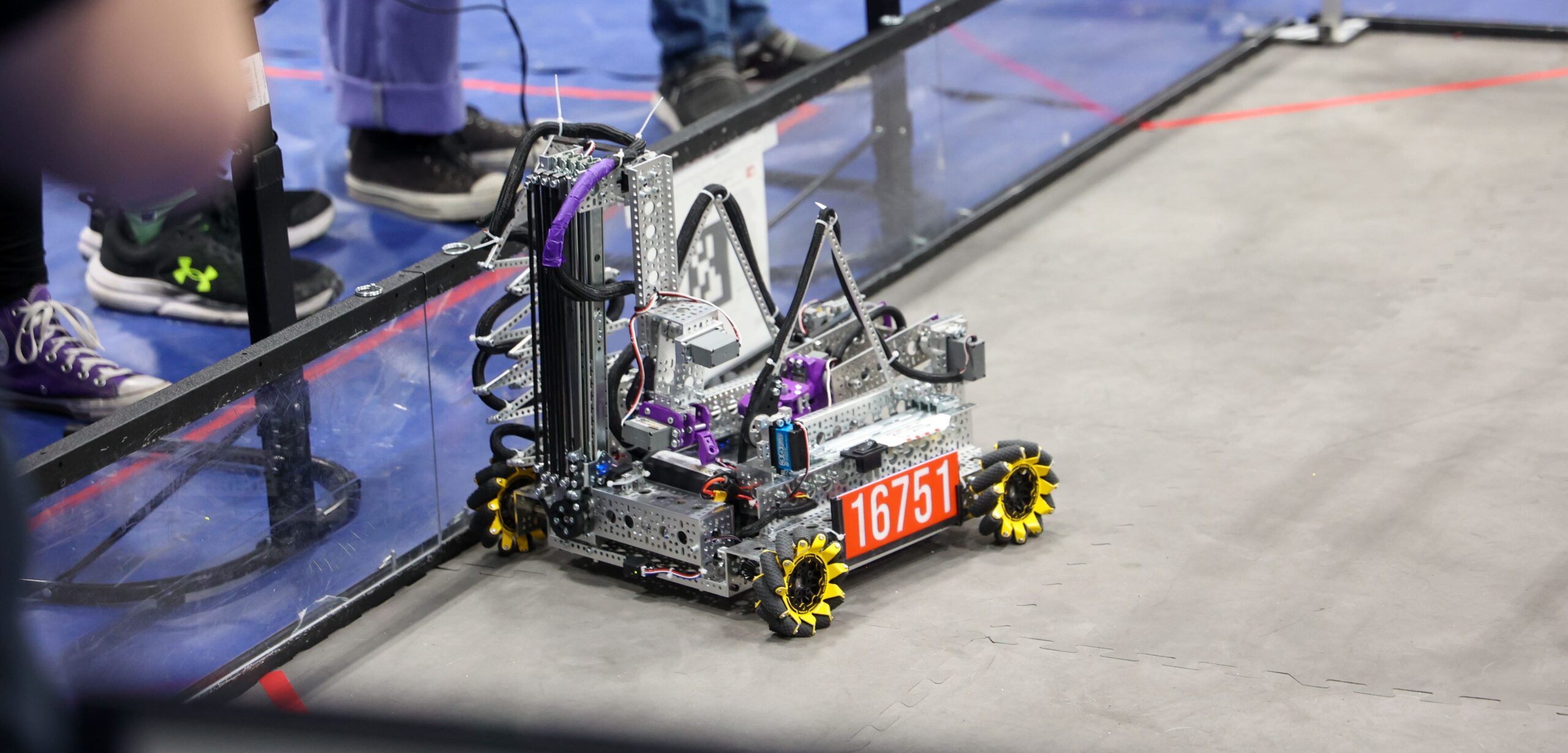
Robot Design
We design and program our robot to tackle the challenges presented each year. It’s a process that combines creativity, engineering, and problem-solving, as we work to build a robot that’s efficient and effective in completing the competition tasks.
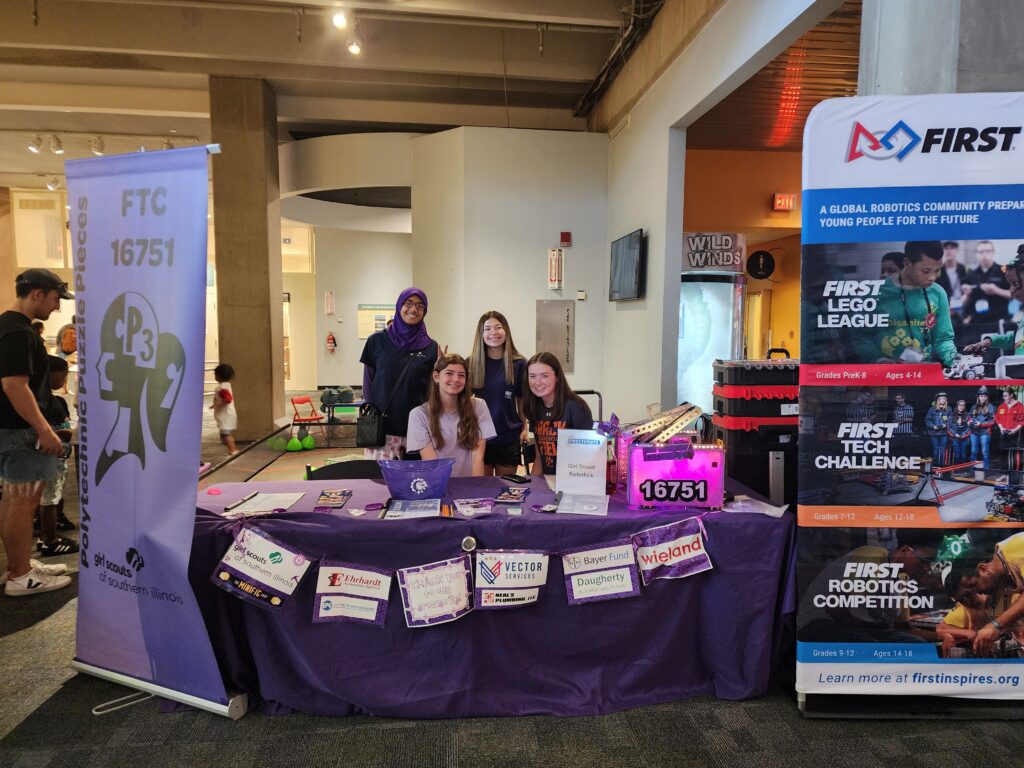
Community Outreach
Our team is devoted to promoting STEM education and inspiring the next generation of innovators. Through mentoring younger students, hosting events, and running outreach programs, we aim to foster a passion for robotics and technology within our community.
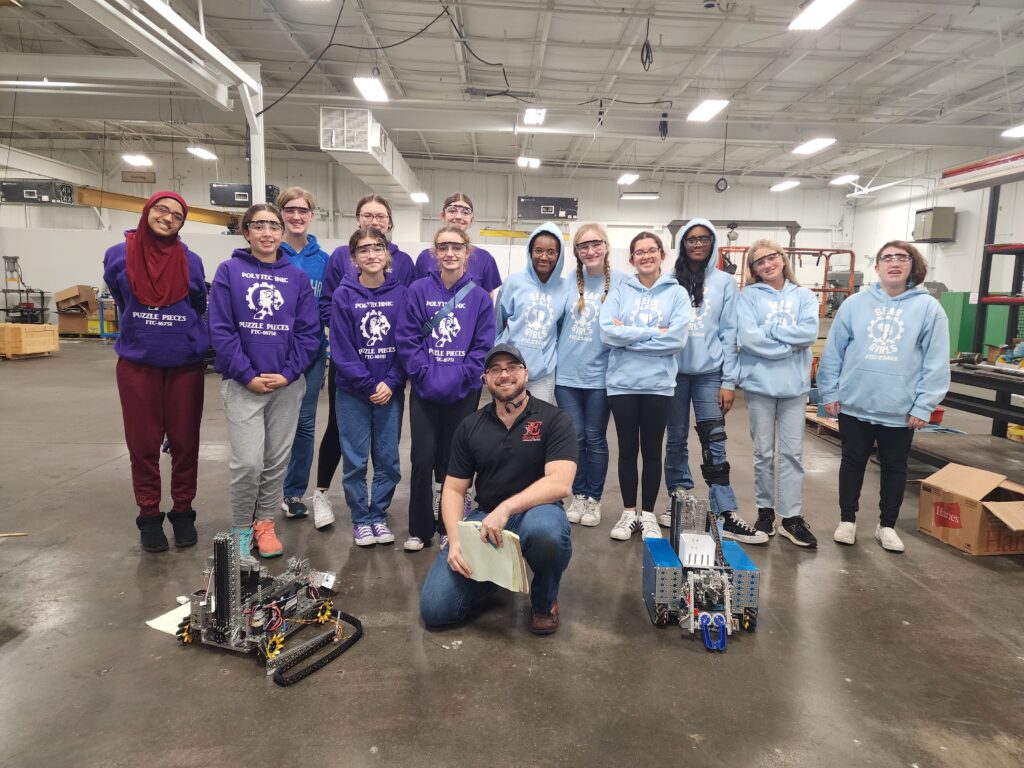
Mentors and Sponsorships
Our team relies on the generous support of our mentors and sponsors. Our mentors are instrumental in guiding our growth in STEM, offering expertise and valuable advice. Meanwhile, our sponsors’ contributions provide the necessary resources to build our robot and compete.
Season Overview
Timeline
Meet 1
Marion High School
Robot Design
Our robot had vertical and horizontal components, which worked together to collect the samples and score them. Our horizontal spin-take used rubber wheels to pick up the samples. Our vertical claw had two large pinchers that were powered by servos. Both were attached to linear slides. Our transfer was similar to a conveyor belt. There were lots of tiny wheels in it and they were powered by multiple servos to move the sample from the horizontal to the vertical component. The vertical claw could then swing out to the left to score samples. For wire management, we chose to use a coil cable.
Autonomous
We only had a program that allowed us to park in the Observation Zone.
Performance
We won 1 match. We lost 4 matches. We placed 14th overall.
Meet 2
Centralia Junior High School
Robot Design
Our robot design was very similar to its design in Meet 1. We still had the horizontal and vertical components working separately with the transfer in the middle. However, we used thicker wheels with gaps for our horizontal spin-take to speed up sample collection. We also upgraded our transfer mechanism. Now, it consisted of 3 axels with rubber spacers in between them, which allowed the transfer to spin freely. We decided to use a badge reel to manage our wires instead of a coil cable as well.
Autonomous
We still had a basic program that allowed our robot to park in the Observation Zone, but we also added the option of scoring 1 pre-loaded sample into the high basket.
Performance
We won 3 matches. We lost 2 matches. We placed 7th overall.
Meet 3
Maryville Christian School
Robot Design
Our robot had major changes done to it between Meets 2 and 3. Our horizontal spin-take was replaced with a custom 3D-printed claw. It had 2 tiny pinchers and could rotate up to 360 degrees. Our vertical claw was also replaced with this design. Our transfer utilized both the horizontal and vertical components. Instead of using a separate mechanism to transfer the samples, we had the horizontal claw transfer the sample directly to the vertical claw. The vertical claw could then swing backwards to score the samples. We used a cable train for wire management. We also added a redundant power distribution system to prevent our robot from losing power during matches.
Autonomous
We had our basic program that allowed us to park in the Observation Zone. We also had a program that allowed us to score 1 pre-loaded sample and 3 additional samples into the high basket.
Performance
We won 3 matches. We lost 2 matches. We placed 7th overall.
Qualifier
Unity Christian School
Robot Design
Our robot still had the same horizontal and vertical components from Meet 3. We added a piece of plexiglass on the inside of the robot to prevent the samples from getting stuck in it. We also switched to using cable covers for our wire management. The cable covers were attached to the 2-bar linkages on the horizontal linear slides and the cable covers were attached to a scissor lift structure on the vertical linear slides.
Autonomous
We had 3 different autonomous programs at this point. Our first option was to park in the Observation Zone. Our second option was to score 4 samples in the high basket. Our third, and final, option was to hang 1 pre-loaded specimen on the rungs, and then hang 2 additional specimen as well.
Performance
We won 4 matches. We lost 1 match. We placed 10th overall. We made it into the finalist’s bracket, but we were knocked out. We won the Think Award, which allowed us to advance to State!
State
Elgin Community College
Robot Design
The only new component that we implemented onto our design between qualifier and state was our hanging mechanism. It had 2 hooks on the ends of a pair of linear slides at the back of our robot. We used an open-source CAD file to print the hooks, which was originally designed by SeaCow Robotics (#21418). This design allowed to get a level 2 ascent during endgame.
Autonomous
We still had the same 3 autonomous programs from Meet 4.
Performance
We won 1 match. We lost 4 matches. We placed 20th overall. We won the Connect Award (1st place), which granted us the opportunity to attend a FIRST Premier Event this summer!
Premier Event
Bendix Theatre
Coming Soon!!
We will be attending the Michiana Premier Event in South Bend, Indiana this year! You can look at our Instagram (@polytechnicpuzzlepieces) for any updates.
Have Questions?
Frequently Asked
Questions
What is FIRST?
For Inspiration and Recognition of Science and Technology (FIRST) is a global robotics community that advances young people in STEM education. The program allows its participants to grow their critical thinking skills and become more involved within their communities.
What is FTC?
FIRST Tech Challenge (FTC) is a robotics competition for students in grades 7-12. Teams design, build, and program robots to compete in an alliance format against other teams.
Is Your Team Accepting New Members?
Yes! We are always open to having new members join us! If you are interested, please contact our coach, George Mitchom, at (618) 531-7719.
Do I Need Any Prior Experience to Join the Team?
No prior experience is required! We welcome beginners and provide hands-on training to teach you about robot construction, programming, and the competition process. Our mentors and more experienced team members are here to guide you every step of the way.
What Types of Roles Does Your Team Have?
FTC is more than just building and coding robots. The potential roles available within the team are:
- Builders
- Programmers
- Graphic Designers
- Drivers
- CAD Specialists
- Documentation Specialists
- Social Media Specialists
- Outreach Coordinators
- Strategists
How Often Does Your Team Meet?
We meet twice a week: every Sunday from 3:30-6:30 and every Tuesday from 6:00-8:00.
